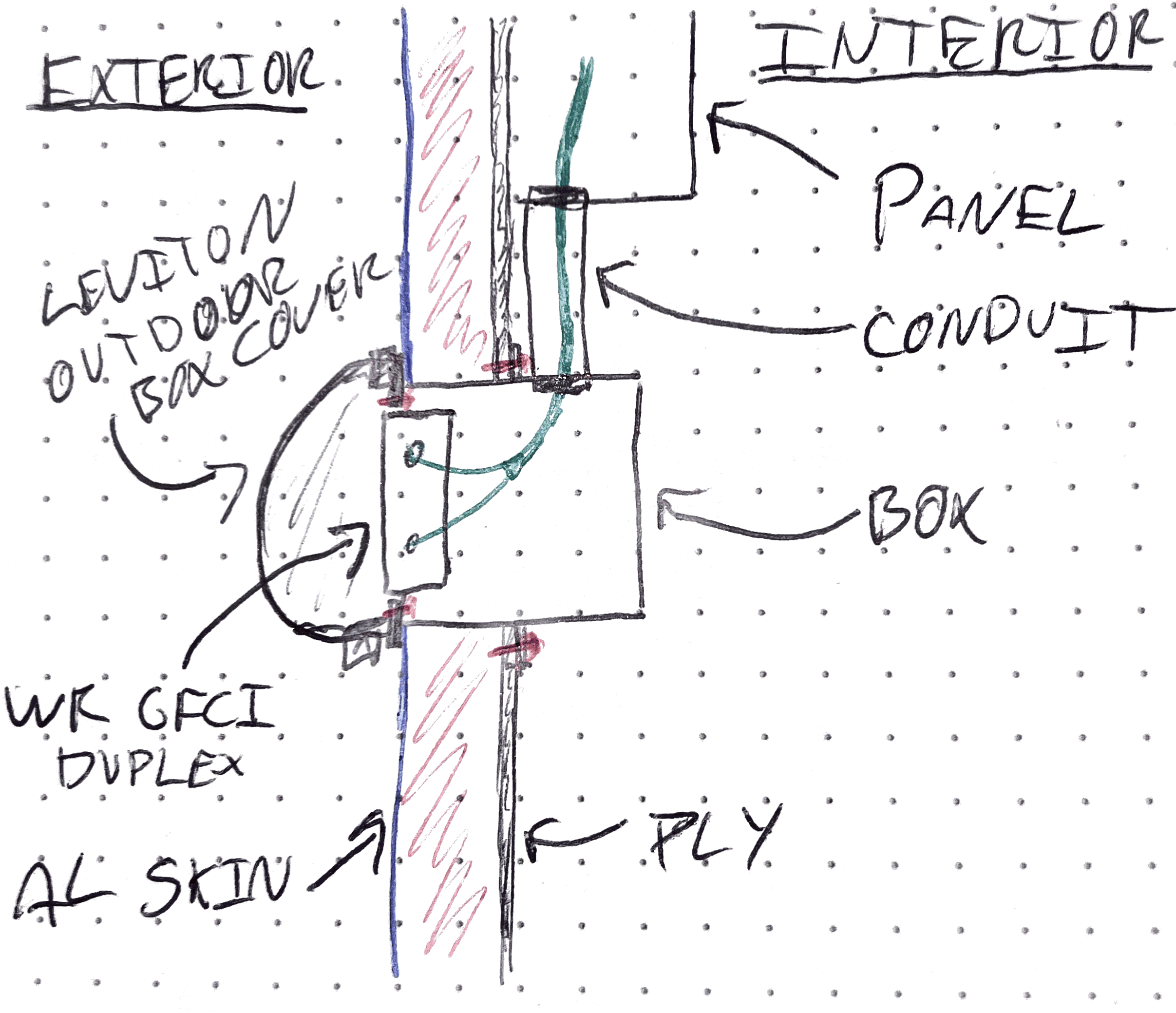I'm putting a duplex outlet on the outside of my enclosed cargo trailer and need to run wire to it from the inside using PVC conduit.
I found this for the outside cover, which I think is pretty nice:
The wall of the trailer is just shy of 2.0"/50mm thick (aluminium skin, 1.5"/38mm of XPS foam, 0.375"/10mm of plywood.
On the inside, I need to run conduit from the box up the wall to a breaker panel knockout. Probably makes sense to use ¾" conduit since I may need to use the larger knockout on the panel.
Questions that I have:
- The outside cover needs something to pull it against the wall, for it to seal, what is holding that?
- The box won't protrude into the inside space to be able to run conduit to it on the side, so it either needs to be much deeper, which I haven't found, or I need to run the conduit to the back of the box. If to the back, I don't see how to have it stay close to the wall and not end up with an elbow or conduit body sticking into the space a few inches. Is there a better way?
Here is a sketch of what I think I'd want, showing how the box is through the wall and visible on both the outside and inside:
I purchased one of these boxes as a starting point, as that was the only box with a rear hole my local Home Despot had:
There must be a smarter approach to my problem, please help!
Thanks,
A.





